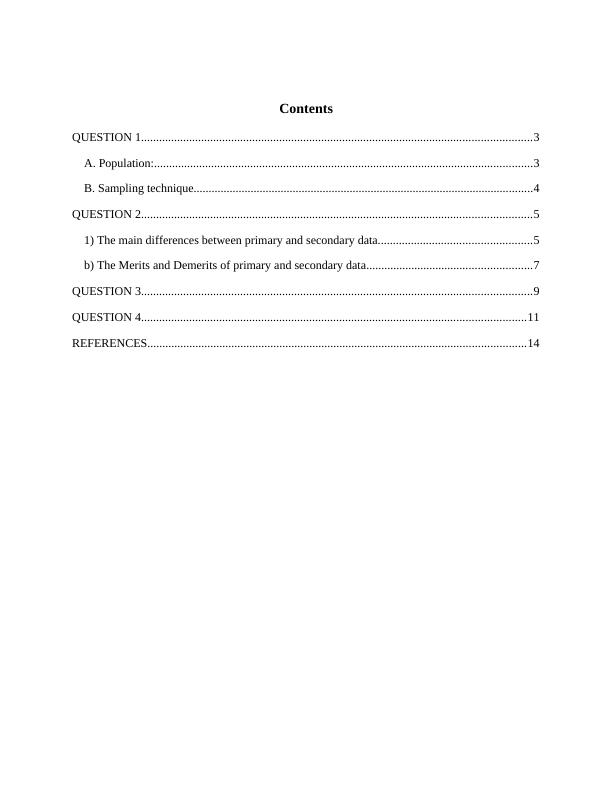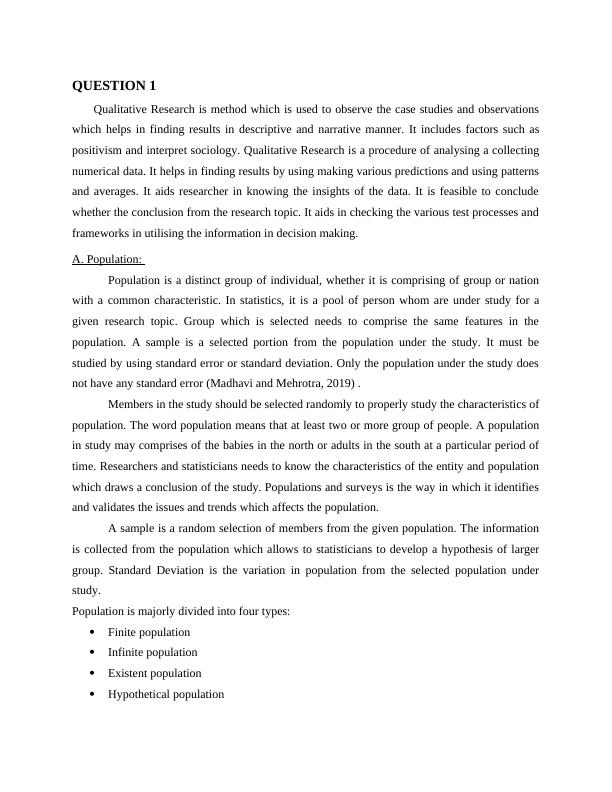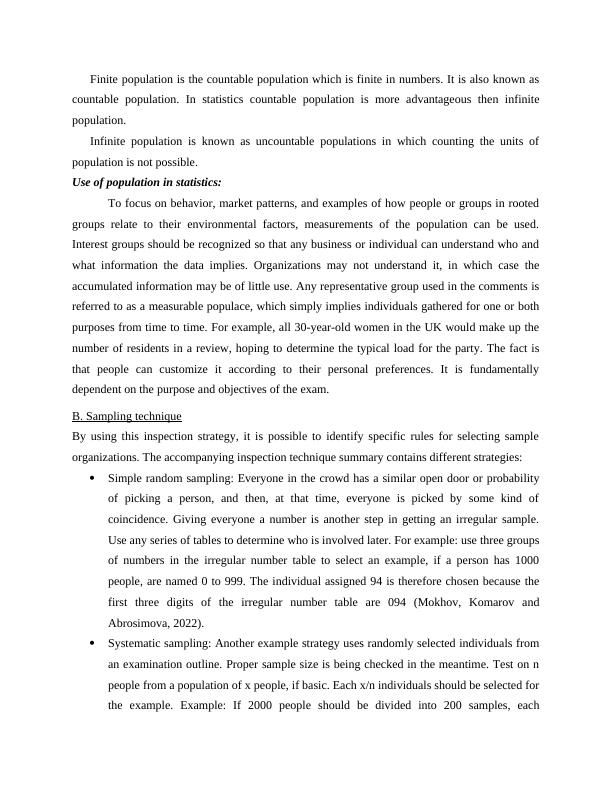Business Analysis
Submit a Business Analysis assignment focusing on preparing and presenting data and information useful to decision makers.
15 Pages4878 Words126 Views
Added on 2023-06-09
About This Document
This study material covers various topics related to Business Analysis such as qualitative research, population, sampling techniques, primary and secondary data, mean and mode, and standard deviation. It provides expert insights and solved assignments for students pursuing courses in this subject.
Business Analysis
Submit a Business Analysis assignment focusing on preparing and presenting data and information useful to decision makers.
Added on 2023-06-09
ShareRelated Documents
End of preview
Want to access all the pages? Upload your documents or become a member.
Importance of Population and Sampling in Research
|17
|5195
|32
Statistics for psychology Assignment
|13
|1816
|115
Exam Quesitons and Answers Related to Statistics
|11
|1028
|30
Statistics and Data Analysis | Questions-Answers
|7
|900
|21
Methods of Sample Size Determination in Biostatistics
|10
|629
|80
Statistics for Management
|17
|1767
|49




